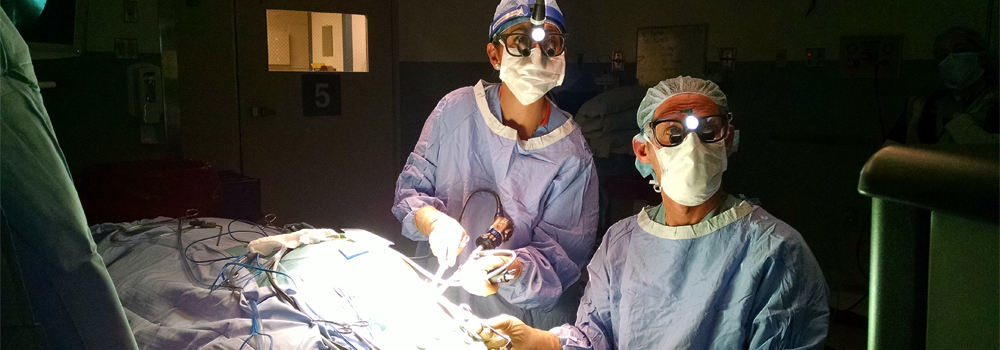
With the only comprehensive nerve center in the region, our neurosurgeons work out of the Penn Nerve Center located on the 8th Floor of Penn Medicine's University City location. From here they offer expert diagnosis and cutting-edge treatment for a wide range of brain, spine, and peripheral nerve conditions, from the common to the most complex. For peripheral nerve cases, our neurosurgeons work alongside orthopedic surgeons, plastic surgeons, neurologists, radiologists, physical and occupational therapists, and other specialists as needed to make sure the patient gets the most accurate diagnosis and best care possible.
The peripheral nervous system includes 43 pairs of nerves that branch off from the central nervous system. This extensive network of nerves connects the brain and spinal cord to the rest of the body, providing proper feeling and movement. When peripheral nerves get damaged, it can result in a change or loss of sensation, weakness or even paralysis.
With two of the best neurosurgeons in the region who perform these specialized procedures, at Penn Medicine we are leading the way in terms of peripheral nerve treatment, research, and innovation. Between Zarina S. Ali MD, MS, FAANS and Eric Zager, MD, they are treating hundreds of peripheral nerve cases every single year. As part of our residency program, you'll have unparalleled access to these operations and have the opportunity to scrub in on the most complex of cases.
Surgical Procedures
- Carpal Tunnel Release/Decompression: For carpal tunnel release, the neurosurgeon will make an incision in the wrist and cut the ligament that forms the roof of the carpal tunnel to relieve pressure. This outpatient procedure can be performed using open or endoscopic surgical techniques.
- Cubital Tunnel Release/Decompression: For Cubital Tunnel Release, the neurosurgeon makes an incision in the elbow and cuts the ligament that forms the roof of the cubital tunnel to relieve pressure.
- Dorsal Root Entry Zone (DREZ) Procedure: This minimally invasive procedure sends high-frequency radio waves into a nerve that has become detached from the spinal cord and is causing severe pain. The goal is to silence the nerve fibers so that they can no longer send pain signals to the brain.
- Gracilis Free Functional Muscle Transfer: The brachial plexus is a network of nerves originating in the spinal cord that controls muscle movement and sensation in the shoulder, arm, and hand. During this treatment, we utilize microsurgical techniques used to transplant the gracilis muscle from your inner thigh up to the arm to replace the paralyzed bicep muscle. Numbers show that in approximately 70% of cases, useful elbow flexion is restored to the paralyzed limb.
- Nerve Grafting: When patients experience a brachial plexus or traumatic nerve injury, they may end up needing a nerve graft. During this procedure, a neurosurgeon takes a healthy piece of nerve from one location and brings it to a different part of the body and uses it to reconnect the two ends of a damaged nerve.
- Nerve Transfers: This is a complex microsurgical procedure that involves harvesting available nerces from other pasrts of the body and transplanting them into the nerves of injured muscle.
- Nerve Stimulation: When neuropathic pain is being felt, this is a treatment used that sends small electrical impulses to stimulate the peripheral nerve. These impulses stop pain signals from traveling to the nerve and replaces them with a slight tingling "pins and needles" feeling. To provide these electrical impulses, electrode leads are implanted under the skin and connected to a batter powered source called an impulse generator. This impulse generator sits under the skin and can be controlled remotely with a hand-held device.
- Tumor Resection: The goal of tumor resection is to remove the tumor while preserving the nerves as best as possible. For this procedure, our neurosurgeon collaborates with the radiologist to accurately locate the tumor and determine the best incision point. At the chance a nerve is damaged during the tumor removal, we repair the nerves during this same procedure.
- Radiation Therapy: Sometimes radiation is needed in addition to tumor resection. It is used most commonly for malignant peripheral nerve sheath tumors or other malignancies affecting the nerves.